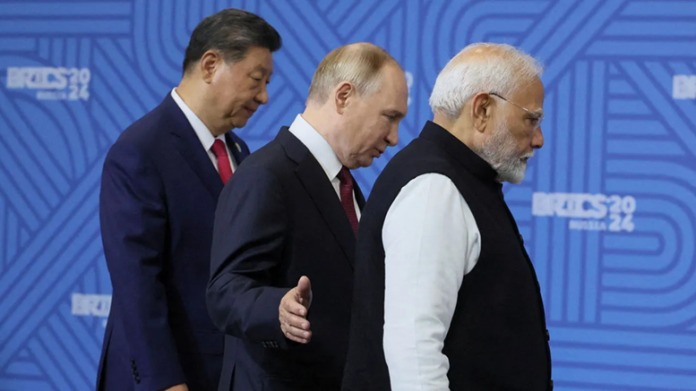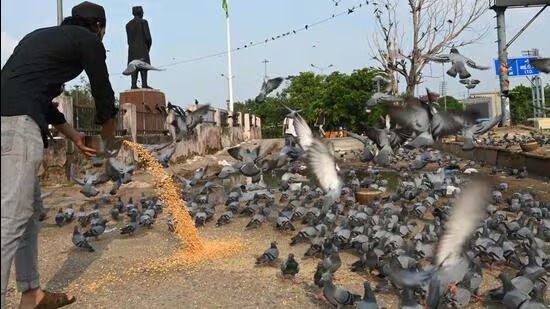 Image Source : HinduPost
Image Source : HinduPost
India’s cautious openness to reviving the long-dormant Russia-India-China (RIC) trilateral dialogue has reignited interest in a format once seen as a counterweight to Western dominance. While no formal meeting has been scheduled, the signals from New Delhi suggest a strategic recalibration amid shifting global alliances and rising pressure from the West.
Background And Historical Context
The RIC format was first proposed in the late 1990s by former Russian Prime Minister Yevgeny Primakov as a Eurasian strategic triangle. It gained traction in the early 2000s, hosting over 20 ministerial-level meetings until 2020. The dialogue was suspended following the Galwan Valley clash between India and China and the onset of the Covid-19 pandemic.
Recent Developments
India’s Ministry of External Affairs stated on July 17 that any decision to resume RIC talks would be taken in a mutually convenient manner. This came after renewed interest from Moscow and Beijing, with Russian Foreign Minister Sergey Lavrov and Deputy Foreign Minister Andrei Rudenko publicly advocating for the format’s revival.
Key highlights from the diplomatic overtures:
-
Russia is actively negotiating with both India and China to restart the RIC mechanism
-
China has expressed support, citing regional peace and stability as shared goals
-
India remains non-committal, emphasizing that scheduling will depend on trilateral consensus
Strategic Motivations Behind The Push
Russia’s push for RIC revival is driven by its desire to counter Western isolation following the Ukraine conflict. Moscow views the format as a way to balance India’s growing ties with the US, EU, and Quad partners. China, meanwhile, sees RIC as a platform to engage India outside contentious bilateral frameworks.
India’s motivations are more nuanced:
-
Frustration with Western double standards, especially over Russian oil imports
-
Concerns over potential secondary sanctions from NATO
-
Desire to maintain strategic autonomy while hedging against overdependence on any bloc
Recent high-level engagements have added momentum. External Affairs Minister S Jaishankar’s visit to China for the SCO foreign ministers’ meet, along with earlier visits by NSA Ajit Doval and Defence Minister Rajnath Singh, signal a tentative thaw in India-China relations.
Challenges To Trilateral Revival
Despite the diplomatic overtures, significant hurdles remain. India-China relations are still strained, with border tensions unresolved. India has consistently maintained that peace along the Line of Actual Control is a prerequisite for full normalization.
Additional complications include:
-
India’s active role in the Quad, viewed by China as a containment strategy
-
China’s continued support for Pakistan in forums that challenge Indian interests
-
Lack of trust and transparency in trilateral engagements
India’s balancing act is further complicated by domestic political considerations and its commitment to a multipolar world order. While RIC offers a platform for dialogue, it also risks diluting India’s strategic clarity if not carefully managed.
Geopolitical Implications
The revival of RIC could reshape regional diplomacy. It may serve as a bridge between competing blocs, offering India a seat at multiple tables. For Russia, it’s a lifeline to remain relevant in Eurasian affairs. For China, it’s a chance to soften its image and reduce friction with India.
Potential outcomes include:
-
Enhanced coordination on global governance reforms
-
Joint positions on trade liberalization and multilateralism
-
A counterbalance to Western-led institutions and alliances
However, experts caution that without genuine trust and shared priorities, RIC may remain symbolic rather than substantive.
Conclusion
India’s openness to RIC revival reflects a pragmatic approach to foreign policy in a polarized world. While the troika talks are not yet back in motion, the signals suggest a willingness to explore strategic flexibility. Whether this leads to meaningful engagement or remains a diplomatic placeholder will depend on how the three powers navigate their complex relationships.
Sources: South China Morning Post, Firstpost, The Diplomat, Times of India, NDTV
Advertisement
Advertisement




